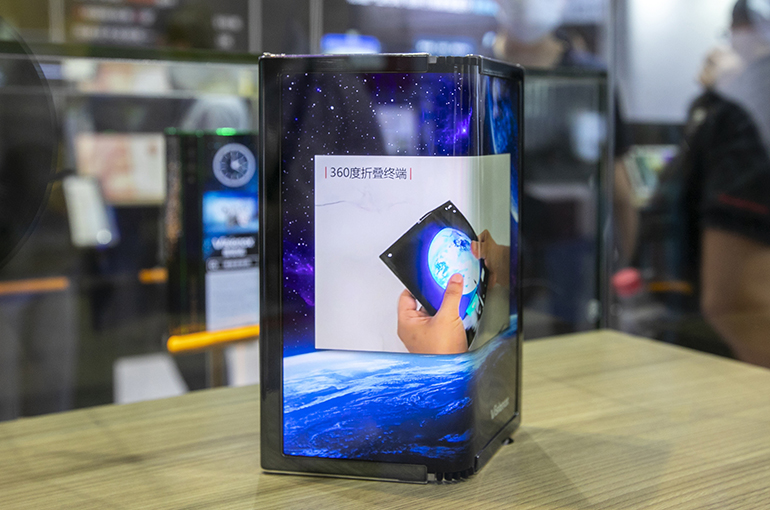 China’s Visionox Makes Major Breakthrough, Paving Way for Wider Use of OLED Screens
China’s Visionox Makes Major Breakthrough, Paving Way for Wider Use of OLED Screens(Yicai Global) May 10 -- Visionox Technology, a Chinese manufacturer of organic light-emitting diode displays, has discovered a new production technique that greatly reduces the cost of making medium-sized and large OLED displays and will enable the screens to be applied in a greater range of scenarios.
This new technology, whose intellectual property rights belong to Visionox, no longer requires the use of fine metal masks in the production of OLED displays, Co-president Yan Ruoyuan told Yicai Global yesterday at the ongoing World Ultra-High-Definition Video Industrial Conference 2023 in Guangzhou, southern Guangdong province.
The high production costs of medium- to large-sized OLED display panels, due to the use of fine metal masks, has led to a relatively low penetration rate, Chairman and President Zhang Deqiang said. For instance, South Korean display titan Samsung’s wastage of materials during the OLED production process is huge.
Visionox’s breakthrough not only helps reduce production costs, but will also enable the displays to be used more widely, Zhang said. The Beijing-based firm is teaming up with companies along the industrial chain to develop more application scenarios. For example, it is working with Hongqi, the luxury marque under FAW Group, on in-car OLED displays.
Visionox’s factory in Hefei, eastern Anhui province will start to install the equipment needed to apply this technology in the second half and trial production will begin from the end of the year, Zhang said. There are likely to be a number of bugs that need to be ironed out during the trials, although the samples made using this technology were problem-free, he added.
Once mass production of its sixth-generation of flexible OLED panels starts, the screens will first be used in medium-sized in-car displays, electronic hardware displays and virtual reality screens that have higher commercial value, Zhang added.
The use of medium-sized OLED displays is growing rapidly and is extending from smart watches and mobile phones to other electronic hardware. For example, US tech giant Apple plans to adopt OLED displays on its iPads and laptops Macbooks next year.
As more breakthroughs are achieved, China’s homegrown OLED displays will become more popular, which will result in increased market share, Yan said. This year, China is expected to produce more than half of the world’s OLED screens.
By 2027, the world’s output value of OLED display panels is expected to be USD56.6 billion, and this could rise to as much as CNY500 billion (USD72.2 billion) by 2030, Yan said.
Two other leading Chinese OLED display makers, TCL Technology and BOE Technology, also announced their latest achievements in terms of technological development and applications at the event.
Editor: Kim Taylor